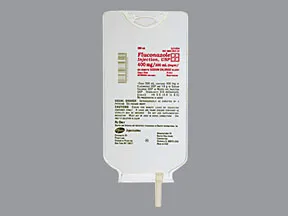Fluconazole in sodium chloride (iso-osmotic) intravenous : uses, side
Today, I would like to shed some light on two interesting uses of Fluconazole, namely its use in Sodium Chloride (Iso-Osmotic) Intravenous formulation and its role in treating Tinea Versicolor.
Fluconazole In Sodium Chloride (Iso-Osmotic) Intravenous
Fluconazole is a highly versatile antifungal medication that can be administered through various routes, including intravenous (IV) therapy. The intravenous formulation of Fluconazole is particularly useful in cases where oral administration may not be feasible or in patients who require rapid relief from severe fungal infections.

The primary purpose of Fluconazole in Sodium Chloride (Iso-Osmotic) Intravenous is to combat invasive fungal infections that may affect different parts of the body, such as the bloodstream, central nervous system, or certain vital organs. By delivering Fluconazole directly into the bloodstream, it can rapidly reach the site of infection and effectively inhibit the growth of the offending fungi.
It is important to note that Fluconazole in the IV formulation is strictly administered under medical supervision, as it requires careful monitoring of the patient's response and any potential side effects. Common side effects may include nausea, vomiting, and diarrhea. However, serious adverse reactions are rare but can include liver damage or severe allergic reactions.
Oral Fluconazole Treatments for Tinea Versicolor
Tinea Versicolor, also known as pityriasis versicolor, is a common fungal infection of the skin that primarily affects young individuals. It is caused by an overgrowth of a natural yeast-like fungus called Malassezia. Oral Fluconazole has been shown to be an effective treatment option for Tinea Versicolor.

In cases where topical creams or shampoos have not provided satisfactory results, a course of oral Fluconazole therapy can be considered. The medication works by inhibiting the growth of the fungus responsible for the infection, gradually restoring the affected skin to its normal condition.
It should be noted that Fluconazole is a prescription medication, and the dosage and duration of treatment should be determined by a healthcare professional based on the severity of the infection and individual factors. Adherence to the prescribed regimen, along with proper skin hygiene, is essential for successful management of Tinea Versicolor.
In conclusion, Fluconazole exhibits its versatility in two distinct ways: the Sodium Chloride (Iso-Osmotic) Intravenous formulation, which is crucial in treating severe systemic fungal infections, and its effectiveness in combating Tinea Versicolor when administered orally. Both applications require careful consideration and medical guidance to ensure optimal outcomes. If you suspect you may benefit from Fluconazole treatment, consult with a healthcare professional to determine the most appropriate course of action.